COVID-19
‘Highly improbable’: New study exposes flaws in Lancet paper claiming COVID vaccines saved millions of lives
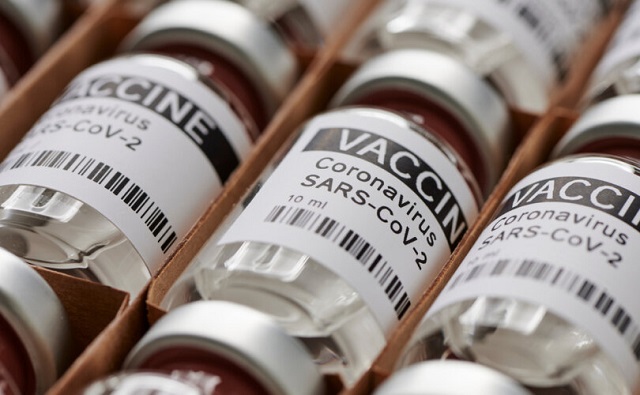
From LifeSiteNews
A new study by all-cause mortality researchers Denis Rancourt, Ph.D., and Joseph Hickey, Ph.D., re-examined the mathematical model behind a paper published in The Lancet claiming the COVID-19 vaccines saved millions of lives. The Lancet paper, cited more than 700 times, was partially funded by the World Health Organization and the Bill & Melinda Gates Foundation.
This article was originally published by The Defender — Children’s Health Defense’s News & Views Website.
When two University of Pennsylvania scientists earlier this month won the 2023 Nobel Prize in Physiology or Medicine for their work in developing “effective mRNA vaccines against COVID-19,” the Nobel Committee and legacy media organizations celebrated the COVID-19 vaccines for saving “millions of lives.”
But a new study re-examining the mathematical model behind the life-saving claims – a model that was laid out in a study published in 2022 in The Lancet Infectious Diseases – concluded the model was deeply flawed and the resulting characterization of the COVID-19 vaccines “must be invalid.”
The Lancet paper, funded by the World Health Organization (WHO) Gavi, the Vaccine Alliance and the Bill & Melinda Gates Foundation, among others, has been cited more than 700 times.
All-cause mortality researchers Denis Rancourt, Ph.D., and Joseph Hickey, Ph.D., calculated and graphed the mortality rates that would have occurred without the vaccines, as projected by Waston et al. in The Lancet study, and compared those projections to the actual all-cause mortality rates.
Rancourt and Hickey tested the assertions in The Lancet paper that the vaccines averted tens of millions of excess deaths, defined as the number of deaths from all causes that exceeds the expected number of deaths under normal conditions.
If The Lancet paper model were accurate, Rancourt and Hickey wrote, without the vaccines the global mortality rates would have spiked to historically unprecedented and unimaginable levels suddenly, a year into the pandemic, at precisely the moment the vaccines rolled out.
And the vaccines would have nearly perfectly reduced those unimaginable levels of mortality back to baseline mortality rates.
They concluded that Watson et al.’s “results and the associated fantastic claims of millions of lives saved are highly improbable,” and that their theoretical claims have “no connection to actual mortality,” but instead are based on “wild” assumptions.
The findings raise questions about the serious failures of the peer review process in top journals, the Nobel award process and the media’s verification processes, according to the authors, who are both part of the Canada-based Correlation Research in the Public Interest.
‘So improbable it should be qualified as impossible’
According to Rancourt and Hickey, given there is no known controlled randomized clinical trial showing the COVID-19 vaccines caused death to be averted, the primary basis for such claims comes from Watson et al., who concluded:
“[Findings] Based on official reported COVID-19 deaths, we estimated that vaccinations prevented 14·4 million (95% credible interval [Crl] 13·7–15·9) deaths from COVID-19 in 185 countries and territories between Dec 8, 2020, and Dec 8, 2021.
“This estimate rose to 19·8 million (95% Crl 19·1– 20·4) deaths from COVID-19 averted when we used excess deaths as an estimate of the true extent of the pandemic …
“[Interpretation] COVID-19 vaccination has substantially altered the course of the pandemic, saving tens of millions of lives globally.”
To test the validity of the model’s projections, Rancourt and Hickey used Watson et al.’s data to calculate what the all-cause mortality would have been over time for 95 countries if the researchers’ claims were true and no COVID-19 vaccines were administered.
To compare the implications of those claims to actual all-cause mortality, they distributed the paper’s most conservative estimate of “14.4 million deaths averted” globally, calculating the number of deaths averted per country as a mathematical combination over time of vaccines administered and vaccine effectiveness.
They created graphs to show how Watson et al.’s theoretical all-cause mortality rates without the vaccine compared to actual all-cause mortality rates.
The graphs also show all-cause mortality rates prior to the pandemic and note the date the WHO declared the global pandemic and the date of the vaccine rollouts for each country.
In the U.S., for example (Figure 1), there were unprecedented peaks in all-cause mortality in 2020, 2021 and 2022 that the researchers have tied, in other papers, to pandemic measures such as the widespread use of ventilators, and to mortality associated with the vaccine itself.
Those peaks can be seen in the blue line on the graph, which shows the actual all-cause mortality. The projected scenario from Watson et al’.s paper is plotted in red.


Figure 1. United States (USA): (top panel) All-cause mortality by week, 2018-2022, measured (blue), calculated following Watson et al. (2022) (red-solid), continued (red-dashed); (bottom panel) same, expressed as excess all-cause mortalities, and with 1σ uncertainty (shaded blue). In both panels, cumulative COVID-19 vaccine administration (all-doses) (dark grey), March 11, 2020 date, (vertical grey line). Credit: Denis Rancourt, Ph.D., and Joseph Hickey, Ph.D.
If their numbers are correct, the graph shows, a “massive and more-than-unprecedented” national excess mortality would have occurred if the COVID-19 vaccines had not been rolled out, and that spike would have coincidentally happened at precisely the moment when the rollout happened to occur, but not before.
“This would be a remarkable coincidence,” Rancourt and Hickey wrote, especially given this spike would have happened suddenly after several waves of infection and one year after the pandemic was declared.
It is also notable, they said, that the vaccines supposedly lowered all-cause mortality rates to precisely the pre-pandemic numbers, rather than to some intermediary number.
A similar phenomenon would have happened, they said, in Canada according to Watson et al.’s calculations. Unlike the U.S., Canada had very minimal changes in all-cause mortality through the entire pandemic period.
However, the calculations by Watson et al. predict that Canada would have seen a tripling in all-cause mortality by week for approximately a year if the vaccines had not been rolled out, the authors wrote.


Figure 2. Canada (CAN): (top panel) All-cause mortality by week, 2018-2022, measured (blue), calculated following Watson et al. (2022) (red-solid), continued (red-dashed); (bottom panel) same, expressed as excess all-cause mortalities, and with 1σ uncertainty (shaded blue). In both panels, cumulative COVID-19 vaccine administration (all-doses) (dark grey), March 11, 2020, date (vertical grey line). Credit: Denis Rancourt, Ph.D., and Joseph Hickey, Ph.D.
In Canada, there is also “no visible decrease in actual all-cause mortality” temporally associated with the roll-outs, which one might expect if the roll-outs affected mortality. Rather, they wrote, “the opposite is apparent, with excess mortality proportionately accompanying rollouts.”
They also presented data from 31 European countries, whose situation was analogous to the U.S. “This extraordinary coincidence” they wrote, “essentially occurs in most of 95 countries [they analyzed].”
“In fact, the said coincidence is palpably so improbable that it should, without hesitation, be qualified as impossible,” Rancourt and Hickey wrote. “A single such example in a single country is sufficient to invalidate the exercise of Watson et al. (2022), and the example is repeated for 95 countries.”
‘The opposite of good science’
Rancourt, former physics professor and lead scientist for 23 years at the University of Ottawa, told Children’s Health Defense Staff Scientist J. Jay Couey, Ph.D., on a recent episode of Couey’s Gigaohm Biological livestream, that the Nobel Prize is a powerful political instrument.
Although there are some exceptions where Nobel has recognized authentically important scientific achievements, he said, “Generally speaking the Nobel Prize is an instrument of the establishment for propaganda, to convince people of what things they need to consider to be absolutely true, absolute advancements of human knowledge.”
“It impacts not only the general public but also scientists themselves,” in terms of what they believe and what they research, Rancourt said.
When the 2023 Nobel Prizes were announced, and the legacy media universally made claims about tens of millions of lives saved, Rancourt and Hickey decided to investigate the publication behind the claims: the Waston 2022 paper.
He said they found the paper was “the opposite of good science.”
That was not, Rancourt noted, because the mathematical calculations were wrong, but because the authors made no attempt to examine whether the assumptions behind their model inputs were logical, or whether their predictions were “reasonable and realistic,” meaning they could occur in the real world.
Rancourt told Couey after doing their analysis, he and his colleagues found the claims in the paper were so “stunning” it led them to question:
How did this get through peer review? … Who were these reviewers? How could they be so blind and incompetent and unquestioning of what some authors are doing, which is completely novel and completely fabricated? … Are they not able to see it?
And on the other hand, what about the editors? How do the editors pick these reviewers? Did the editors go with only the reviewers that thought it was okay and ignore the reviewers that were critical of it? Are they themselves so scientifically illiterate [they cannot] do a theoretical calculation?
Scientists, he said, particularly when one is doing theoretical projections, must constantly critically interrogate their own results.
“They have to be critical of their own ideas, not just rub their hands because they get something that Gates will like,” he said.
Worse, he said, “the Nobel Prize Committee itself had to be clueless, had to be unscientific, had to be unquestioning, had to look for something, a prize they wanted to give, and not bother thinking for themselves about whether or not this made any sense. And then they repeated this ‘millions of lives saved’ thing, which is nonsense.”
As a result, a “horrendous product that should never have been injected into people’s bodies, is now something that we’re going to celebrate. It’s going to be an achievement of human science, of the science created by humans.”
“There is no scientific basis for saying that whatsoever,” Rancourt said. “No clinical trials have ever demonstrated that. And it’s based on a garbage simulation funded by the industry, where the authors didn’t even double check if their results made any kind of sense.”
“This is the absurdity that we are now experiencing,” he said.
This article was originally published by The Defender – Children’s Health Defense’s News & Views Website under Creative Commons license CC BY-NC-ND 4.0. Please consider subscribing to The Defender or donating to Children’s Health Defense.
COVID-19
Canadian veteran challenges conviction for guarding War Memorial during Freedom Convoy

From LifeSiteNews
When the convoy first came to Ottawa, allegations were floated that the memorial had been desecrated. After learning of this, Evely quickly organized a group of veterans to stand guard around the clock to protect the area.
A Canadian veteran appealed to the Ontario courts after he was convicted for organizing a guard around the National War Memorial during the Freedom Convoy.
In an October press release, the Justice Centre for Constitutional Freedoms (JCCF) announced that an appeal has been filed in the Ontario Court of Appeals on behalf of Master Warrant Officer (Ret’d) Jeffrey Evely over his conviction for mischief and obstructing police while on his way to guard the Ottawa War Memorial during the 2022 Freedom Convoy.
“By locking down large sections of downtown Ottawa, the police were effectively preventing all civilians from accessing public areas and greatly exceeded their powers under the common law,” constitutional lawyer Chris Fleury explained.
“This case raises issues that have implications for protests across the province and the country. We are hopeful that the Ontario Court of Appeal will agree and grant leave to appeal,” he added.
The appeal argues that police overstepped their authority in their response to the 2022 protest of COVID mandates. Police actions at the time included locking down the Ottawa core, establishing checkpoints, and arresting protesters.
In September 2024, Everly was convicted of mischief and obstruction after his involvement in the 2022 Freedom Convoy, which protested COVID mandates by gathering Canadians in front of Parliament in Ottawa.
As LifeSiteNews previously reported, when the convoy first came to Ottawa, allegations were floated that the memorial had been desecrated. After learning of this, Evely quickly organized a group of veterans to stand guard around the clock to protect the area.
However, under former Prime Minister Justin Trudeau’s use of the Emergencies Act, many parts of downtown Ottawa were blocked to the public, and a vigilant police force roamed the streets.
It was during this time that Evely was arrested for entering a closed off section of downtown Ottawa during the early hours of February 19, 2022. He had been on his way to take the 4:25 a.m. shift protecting the Ottawa War Memorial.
As Evely walked to the memorial, he was allegedly told to stop by police. According to the police, Evely “ran for a short distance before being confronted by two additional police officers.”
He was forcibly pushed to the ground, landing face first. The veteran was then arrested and charged with mischief and obstructing police.
At the time, the use of the EA was justified by claims that the protest was “violent,” a claim that has still gone unsubstantiated.
In fact, videos of the protest against COVID regulations and shot mandates show Canadians from across the country gathering outside Parliament engaged in dancing, street hockey, and other family-friendly activities.
Indeed, the only acts of violence caught on video were carried out against the protesters after the Trudeau government directed police to end the protest. One such video showed an elderly women being trampled by a police horse.
While the officers’ actions were originally sanctioned under the EA, Federal Court Justice Richard Mosley ruled that Trudeau was “not justified” in invoking the EA, forcing Crown prosecutors to adopt a different strategy.
Now, Crown prosecutors allege that the common law granted police the authority to stop and detain Evely, regardless of the EA.
However, Evely and his lawyers have challenged this argument under section 9 of the Canadian Charter of Rights and Freedoms, insisting that his “arrest and detention were arbitrary.”
Earlier this month, Freedom Convoy organizers Tamara Lich and Chris Barber were sentenced to 18-month house arrest after a harrowing 25-month trial process. Many have condemned the sentence, warning it amounts to “political persecution” of those who stand up to the Liberal government.
COVID-19
Freedom Convoy leader Tamara Lich says ‘I am not to leave the house’ while serving sentence
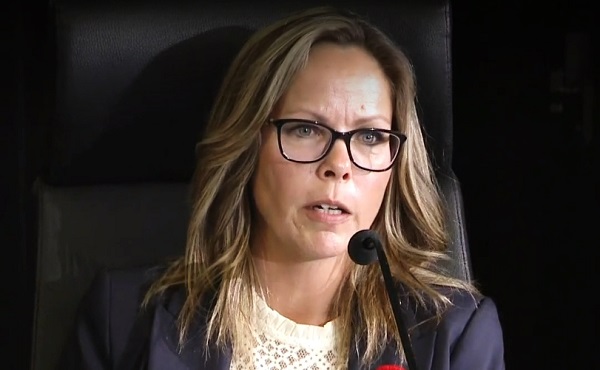
From LifeSiteNews
‘I was hoping to be able to drop off and pick up my grandsons from school, but apparently that request will have to go to a judge’
Freedom Convoy leader Tamara Lich detailed her restrictive house arrest conditions, revealing she is “not” able to leave her house or even pick up her grandkids from school without permission from the state.
Lich wrote in a X post on Wednesday that this past Tuesday was her first meeting with her probation officer, whom she described as “fair and efficient,” adding that she was handed the conditions set out by the judge.
“I was hoping to be able to drop off and pick up my grandsons from school, but apparently that request will have to go to a judge under a variation application, so we’ll just leave everything as is for now,” she wrote.
Lich noted that she has another interview with her probation officer next week to “assess the level of risk I pose to re-offend.”
“It sounds like it’ll basically be a questionnaire to assess my mental state and any dangers I may pose to society,” she said.
While it is common for those on house arrest to have to ask for permission to leave their house, sometimes arrangements can be made otherwise.
On October 7, Ontario Court Justice Heather Perkins-McVey sentenced Lich and Chris Barber to 18 months’ house arrest after being convicted earlier in the year convicted of “mischief.”
Lich was given 18 months less time already spent in custody, amounting to 15 1/2 months.
As reported by LifeSiteNews, the Canadian government was hoping to put Lich in jail for no less than seven years and Barber for eight years for their roles in the 2022 protests against COVID mandates.
Interestingly, Perkins-McVey said about Lich and Barber during the sentencing, “They came with the noblest of intent and did not advocate for violence.”
Lich said that her probation officer “informed me of the consequences should I breach these conditions, and I am not to leave the house, even for the approved ‘necessities of life’ without contacting her to let her know where I’ll be and for how long,” she wrote.
“She will then provide a letter stating I have been granted permission to be out in society. I’m to have my papers on my person at all times and ready to produce should I be pulled over or seen by law enforcement out and about.”
Lich said that the probation officer did print a letter “before I left, so I could stop at the optometrist and dentist offices on my way home.”
She said that her official release date is January 21, 2027, which she said amounts to “1,799 days after my initial arrest.”
As reported by LifeSiteNews, Lich, reflecting on her recent house arrest verdict, said she has no “remorse” and will not “apologize” for leading a movement that demanded an end to all COVID mandates.
LifeSiteNews reported that Conservative Party leader Pierre Poilievre offered his thoughts on the sentencing, wishing them a “peaceful” life while stopping short of blasting the sentence as his fellow MPs did.
In early 2022, the Freedom Convoy saw thousands of Canadians from coast to coast come to Ottawa to demand an end to COVID mandates in all forms. Despite the peaceful nature of the protest, Trudeau’s government enacted the never-before-used Emergencies Act (EA) on February 14, 2022.
-

 Brownstone Institute2 days ago
Brownstone Institute2 days agoBizarre Decisions about Nicotine Pouches Lead to the Wrong Products on Shelves
-

 Agriculture1 day ago
Agriculture1 day agoDanish Cows Collapsing Under Mandatory Methane-Reducing Additive
-

 Alberta1 day ago
Alberta1 day agoAlberta government’s plan will improve access to MRIs and CT scans
-
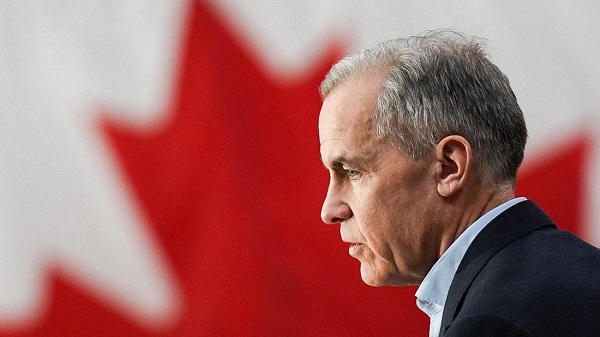
 Business2 days ago
Business2 days agoCarney government’s first budget should signal end to crippling ‘climate’ policies
-

 Business2 days ago
Business2 days agoTrump’s Tariffs Have Not Caused Economy To Collapse
-

 Health2 days ago
Health2 days agoRFK Jr’s argument for studying efficacy of various vaccines
-
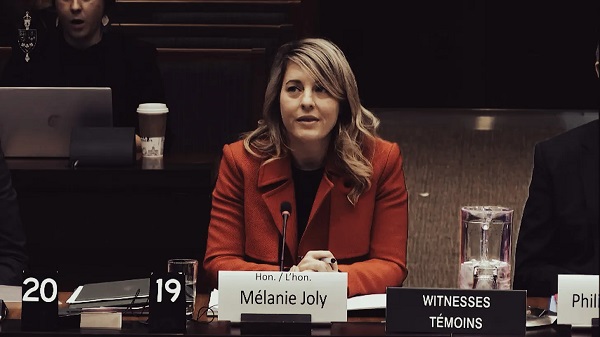
 Business1 day ago
Business1 day agoNo Jobs Clause: Liberals Under Fire Over Stellantis Deal in Fiery Committee Showdown
-
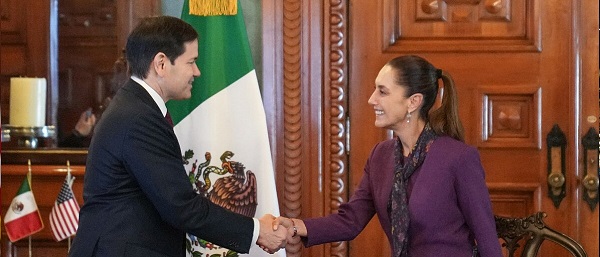
 Daily Caller2 days ago
Daily Caller2 days agoTrump Reportedly Planning Ground Troops, Drone Strikes On Cartels In Mexico






